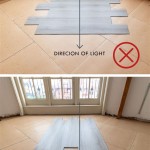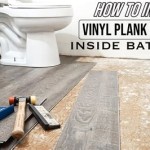Wood Flooring Design Patterns: A Comprehensive Guide
Wood flooring offers a timeless aesthetic and enduring durability, making it a popular choice for residential and commercial spaces. Beyond the type of wood and finish, the chosen design pattern significantly impacts the overall look and feel of a room. Selecting the correct pattern involves considering the room's size, shape, lighting, and intended style. This article explores various wood flooring design patterns, providing insights into their characteristics, advantages, and best applications.
Understanding the Basics: Plank Size and Orientation
Before delving into specific patterns, it's crucial to understand the fundamental elements: plank size and orientation. Plank size, referring to the length and width of individual wood pieces, influences the perceived scale of the room. Wider planks often create a more expansive and luxurious feel, while narrower planks can lend a traditional or rustic charm. Length also plays a role; longer planks minimize the number of seams, contributing to a cleaner, more contemporary look. Shorter planks, on the other hand, can facilitate intricate patterns and complex layouts.
Orientation refers to the direction in which the planks are laid. Running planks parallel to the longest wall can visually lengthen a room, while orienting them perpendicular to the main light source can highlight the wood's natural grain and minimize glare. Diagonal orientations can add visual interest and make a small room appear larger, though they often require more material and labor due to increased cutting and waste.
Popular Wood Flooring Patterns: Exploring the Options
The following are some of the most common and visually appealing wood flooring patterns:
Straight Pattern
The straight pattern, also known as a parallel or running bond pattern, is the simplest and most cost-effective option. Planks are laid parallel to each other along the length or width of the room. This pattern is versatile and suits various architectural styles. It is particularly effective in highlighting the wood's natural beauty, allowing the grain and color variations to take center stage. The straight pattern minimizes waste and is relatively easy to install, making it a practical choice for large areas or budget-conscious projects.
Variations within the straight pattern include staggering the seams between rows, creating a more random and organic appearance. This staggered approach is often called a "brick pattern" and provides additional visual interest compared to perfectly aligned seams. The amount of stagger can be customized, from subtle offsets to more dramatic variations.
Staggered Pattern
A staggered pattern provides similar benefits to straight pattern, but adds visual interest by offsetting rows. This creates a more random, natural look, while still being relatively simple to install. It's a good choice to avoid having seams line up throughout the floor, which can draw the eye in an undesirable way.
Diagonal Pattern
The diagonal pattern involves installing planks at a 45-degree angle to the walls. This orientation can visually expand a room and add a dynamic feel. While visually appealing, the diagonal pattern requires more precise cutting and installation, resulting in increased labor costs and material waste. It is important to carefully plan the layout to ensure consistent angles and minimize gaps.
The diagonal pattern is particularly effective in rooms with unusual shapes or angles, as it can help to unify the space and mask irregularities. It also works well in rooms with limited natural light, as the angled planks can reflect light in different directions, brightening the overall ambiance.
Herringbone Pattern
The herringbone pattern is a classic and sophisticated design in which rectangular planks are arranged in a zigzag formation. Planks are laid at a 45-degree angle, creating a series of repeating "V" shapes. This pattern adds a sense of movement and visual interest to any room. The herringbone pattern is often associated with traditional and formal settings, but it can also be incorporated into contemporary designs for a touch of elegance.
Installing the herringbone pattern requires precise cutting and meticulous attention to detail. It is typically more labor-intensive than simpler patterns and can result in higher installation costs. However, the visual impact and timeless appeal of the herringbone pattern often justify the investment.
Chevron Pattern
Similar to herringbone, the chevron pattern also features a zigzag design, but with a distinct difference: the planks are cut at an angle to create a continuous "V" shape. This creates a more seamless and uniform appearance compared to the herringbone pattern, where the planks meet at a 90-degree angle. The chevron pattern is often considered more contemporary and streamlined than herringbone.
The chevron pattern requires even more precision than herringbone, as the angled cuts must be perfectly aligned to create a seamless and consistent design. It is typically more expensive to install due to the increased complexity and material waste. However, the clean lines and sophisticated aesthetic of the chevron pattern make it a popular choice for modern and upscale interiors.
Parquet Pattern
Parquet flooring consists of geometric patterns composed of small, individual wood blocks arranged in a repeating design. Common parquet patterns include squares, triangles, and more complex geometric shapes. Parquet flooring adds a touch of elegance and sophistication to any room, often associated with historical and classic architectural styles.
Installation of parquet flooring requires meticulous planning and precise placement of each individual block. The complexity of the pattern can significantly impact installation time and costs. Parquet flooring is available in a wide range of wood species and finishes, allowing for customization to suit various design preferences.
Basket Weave Pattern
The basket weave pattern mimics the appearance of a woven basket, using rectangular planks arranged in alternating horizontal and vertical sections. This pattern creates a visually interesting and textured surface. The basket weave pattern can be achieved using solid wood planks or engineered wood flooring.
The basket weave pattern is relatively simple to install compared to more intricate patterns like herringbone or chevron. It is suitable for both small and large rooms, adding a touch of rustic charm or modern elegance depending on the wood species and finish chosen.
Picture Frame Pattern
The picture frame pattern involves creating a border around the perimeter of the room, typically using a different wood species or a contrasting color stain. This border frames the main flooring area, adding visual interest and defining the space. The picture frame pattern is often used to highlight architectural features or create a focal point within the room.
The picture frame pattern requires careful planning and precise measurements to ensure a seamless transition between the border and the main flooring area. The width of the border can be customized to suit the room's dimensions and design preferences. This pattern is effective in adding a touch of sophistication and elegance to any room.
Random Width Pattern
The random width pattern utilizes planks of varying widths, creating a more natural and organic look. This pattern is often used in rustic or farmhouse-style interiors, adding a sense of character and authenticity. The random width pattern is less formal than other patterns, providing a relaxed and inviting atmosphere.
Installing the random width pattern requires careful planning to ensure a balanced distribution of plank widths throughout the room. Variations in plank width can create visual interest and hide minor imperfections in the subfloor. This pattern is a suitable option for those seeking a more casual and less structured flooring design.
Additional Considerations: Wood Species and Finish
The choice of wood species and finish significantly impacts the overall appearance of the flooring pattern. Different wood species offer varying grain patterns, colors, and hardness levels. For example, oak is a versatile and durable option with a prominent grain, while maple offers a smoother, more uniform appearance. Exotic wood species like Brazilian cherry or walnut can add a touch of luxury and sophistication.
The finish also plays a crucial role in determining the flooring's appearance and durability. Different finishes, such as polyurethane, oil-based, or water-based, offer varying levels of sheen, scratch resistance, and maintenance requirements. Matte finishes tend to conceal scratches and imperfections, while glossy finishes enhance the wood's natural luster. The selection of wood species and finish should complement the chosen flooring pattern and the overall design aesthetic of the room.
Key Points to Remember When Choosing a Pattern
Room Size and Shape
The size and shape of the room are crucial factors in determining the appropriate flooring pattern. Smaller rooms may benefit from simpler patterns like the straight or diagonal, while larger rooms can accommodate more intricate designs like the herringbone or chevron. Elongated rooms can be visually widened by laying planks perpendicular to the longest wall. Unusual room shapes may require custom patterns or careful planning to ensure a cohesive and visually appealing result.
Style and Ambiance
The chosen flooring pattern should align with the desired style and ambiance of the room. Traditional interiors often benefit from classic patterns like herringbone or parquet, while modern spaces may favor clean lines and minimalist designs like the straight or chevron pattern. Rustic or informal interiors can embrace random width patterns or basket weave designs. Consider the overall design scheme and choose a pattern that complements the room's intended aesthetic.
Budget and Installation
The budget and installation requirements are practical considerations to keep in mind. More intricate patterns like herringbone or chevron typically require more labor and material, resulting in higher installation costs. Simpler patterns like the straight or diagonal can be more cost-effective options. Factor in the cost of materials, labor, and any necessary subfloor preparation when determining the overall budget. It is advisable to obtain multiple quotes from qualified flooring contractors to ensure a competitive price and quality workmanship.

Eye Popping Wood Floor Designs

Design Guide Endless Possibilities Of Wooden Floor Layout Patterns Archdaily

Fashionable Flooring Ideas Wood Floor Patterns Carlisle Wide Plank Floors

Design Guide Endless Possibilities Of Wooden Floor Layout Patterns Archdaily

Patterned Wood Flooring Elegant Designs Ted Todd

Interesting Hardwood Layout Patterns Flooring America

Most Popular Patterns For Wooden Floors

16 Wooden Floor Designs S Living Rooms With Wood Floors Flooring Patterns And Pattern Design

6 Unique Hardwood Flooring Patterns Next Day Floors

7 Wood Floor Patterns That Never Get Old Esb Flooring
Related Posts








